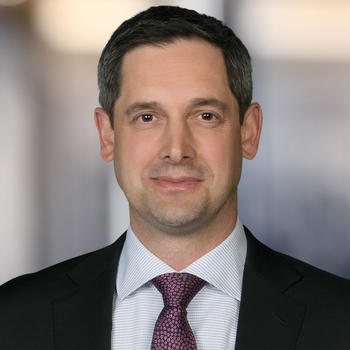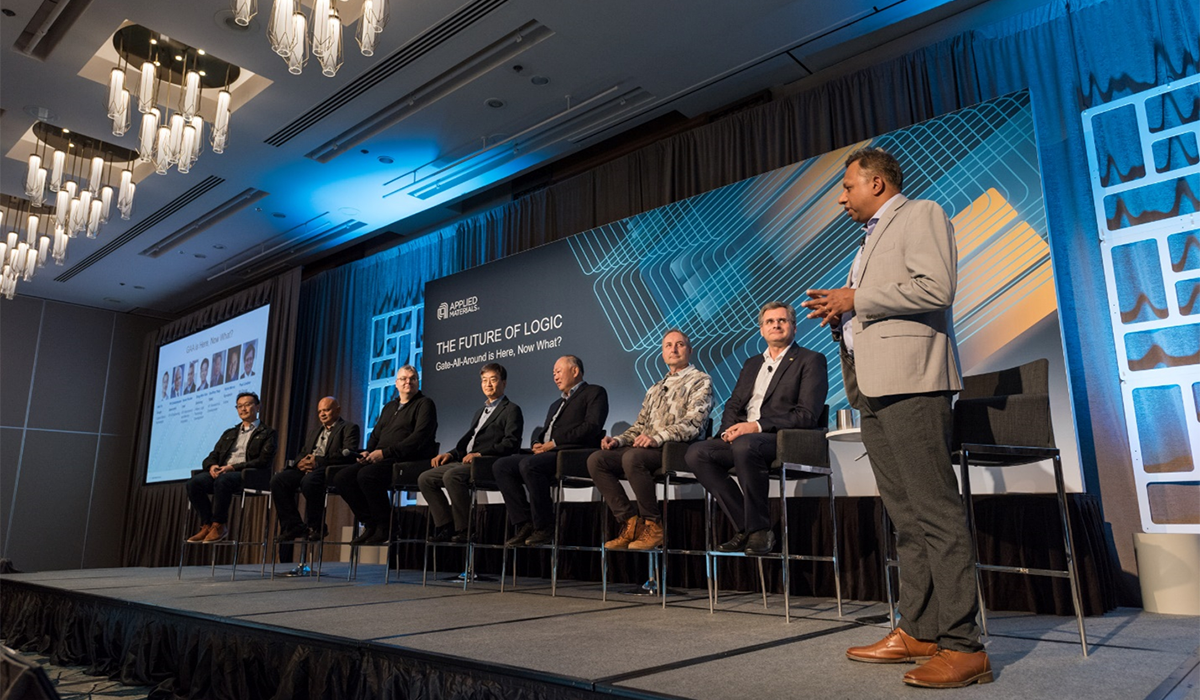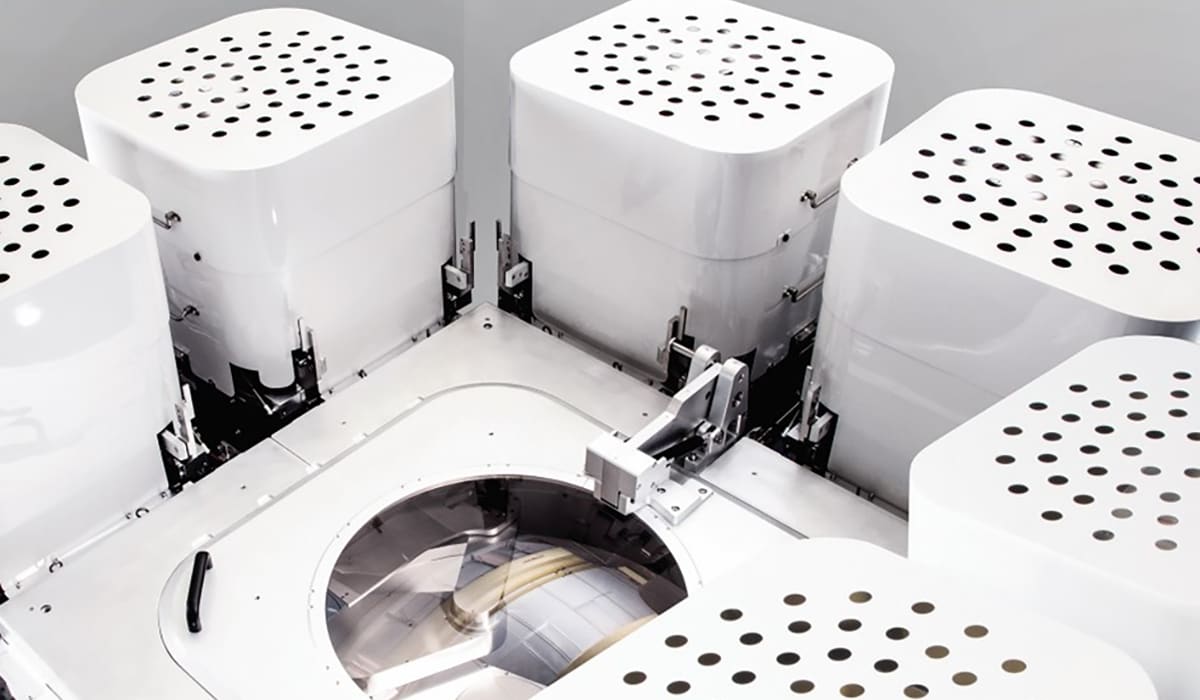Products & Technologies
Back to Menu
Products & Technologies
Services
Resources
Posted
February 02, 2024

Stay updated on our content.
Why We’re Keeping the Silicon in Silicon Valley
by Tristan Holtam
February 2, 2024
In May 2023, Applied Materials announced our new Equipment and Process Innovation and Commercialization platform, the centerpiece of which will be the EPIC Center – a next-generation, multi-billion-dollar collaborative research facility located in Silicon Valley.
The question of where to build the EPIC Center was not easy to answer. In fact, the decision warranted a multi-year study evaluating many factors spanning construction and operating costs, accessibility to global high-tech hubs and talent availability. The selection process was heavily influenced by our perspective on the future of the semiconductor industry, where we see incredible opportunities fused with some formidable challenges.
Anything and everything that generates, transmits, stores or processes data requires chips, fueling semiconductor demand and putting the industry on a path to $1 trillion of annual revenues by the end of this decade[1]. However, realizing this growth potential is not assured. Significant improvements in the performance, power-efficiency and cost of chips are needed to allow technologies like AI to scale. The development roadmap for semiconductors is rich with possibilities, but also mind-blowing complexity. New device architectures, intricate three-dimensional structures, novel materials, new techniques for shrinking feature dimensions, and new approaches to connecting individual chips together will all be needed. As complexity rises, so do the industry’s costs, time-to-market and carbon footprint. At Applied, our belief is that complexity-driven challenges can be neutralized in two ways – increasing innovation and commercialization velocity, and transforming the collaboration model. By more tightly linking the industry’s eclectic ecosystem all the way from the foundational materials science – the fundamental building blocks of chipmaking – to the systems companies pioneering end applications, and everything in between, next-generation technology can be invented and scaled to volume production faster and at lower cost.
These themes of velocity, collaboration and connectivity are central to the EPIC concept. Within a fifty-mile radius of the EPIC Center’s location in Sunnyvale, California there are technology companies with a combined market capitalization of $10 trillion – that’s 25 percent of the value of the S&P 500[2]. While that is an impressive statistic, it’s no secret that Silicon Valley has been a global force in technology for decades, and we believe its formula for success will endure long into the future. Its “not-so-secret” success formula is all about ICs… but not just integrated circuits.
One IC is Ideas and Capital – the fusion of game-changing ideas and people willing to invest in them. Silicon Valley is synonymous with start-ups and venture capital. Over the past twenty years, Silicon Valley has accounted for 40 percent of total venture capital investments in the United States[3]. In 2022, that equated to about $50 billion of capital deployed, and that’s a dazzling amount of money – until you start thinking about semiconductors. In that same year, the top five chipmakers and top five equipment companies combined spent around $55 billion in research and development[4] as they invested in their own game-changing ideas.
A second IC is Innovation and Commercialization. Breakthrough innovation alone is not enough, you need to be able to scale and master the economics. For example, the processor chip in your smartphone is an aggregation of decades of groundbreaking innovations that represent one of humankind’s greatest scientific and engineering accomplishments. As small as a fingernail and thinner than a sheet of paper, that chip contains 15 billion transistors connected with 60 miles of wiring. It is built from 25 materials combined in a hundred different ways, the thinnest layer of which is just four atoms thick. But how those innovations have been commercialized is just as important. It’s the fact that billions of those chips can be produced a year, each costing a few tens of dollars, which makes it possible to put some of the world’s most advanced technology in the hands of almost everyone on the planet.
Another ingredient to Silicon Valley’s magic is Inclusive Collaboration. Throughout its history, the Valley has attracted top talent from around the world and demonstrated that great ideas can come from anyone. It blends different scientific and engineering disciplines and blurs organizational boundaries. That smartphone in your pocket is not the work of a single company, it is an amazing integration of thousands of innovations from hundreds of different companies working together.
As new technology transforms the world at an unprecedented pace, there are profound implications for all of us. As organizations and individuals, we need to evolve and innovate. We need to innovate the way we innovate, and we need to innovate the way we work together. As the new hub of Applied’s global R&D network, the EPIC Center is designed to be a catalyst for the success of our customers and partners. And we believe the DNA of Silicon Valley will be a catalyst for the success of the EPIC Center.
1 Source: SEMI, TechInsights
2 Source: Applied Materials
3 Source: Silicon Valley Institute for Regional Studies. Silicon Valley defined as greater Silicon Valley including San Francisco
4 Based on company financial disclosures
Tristan Holtam
GVP, CEO Chief of Staff, Corporate Strategy and Development

Tristan Holtam is group vice president and chief of staff to the President and CEO of Applied Materials, Inc., Gary Dickerson, where he plays an important role in developing and communicating Applied’s vision and strategy. As head of Corporate Strategy and Development, he works across the business groups and functions to manage the company’s strategy development process and operating rhythm. His responsibilities span key functional groups including corporate strategy and marketing, communications and public affairs, government relations, and facilities. In addition, he oversees teams that are incubating new strategic capabilities and growth opportunities for the company.
Mr. Holtam started at Applied as a New College Graduate in 1997, working in product development and management roles in the Semiconductor and Energy and Environmental Solutions groups before joining the corporate staff.
Mr. Holtam earned his bachelor’s degree in mechanical engineering from the University of Surrey, UK, an MBA from Henley Business School and has been awarded nine patents.

What’s Driving the Need for Innovation in ICAPS?
Applied Materials reached a significant milestone in 2023: For the first time, the largest portion of our wafer fab equipment sales came from customers in markets related to ICAPS – IoT, Communications, Automotive, Power and Sensors.

Charting a Course Through the Next Era of Technology Inflections: Applied Materials’ Panel During IEDM 2023
Applied recently hosted a thought-provoking panel during IEDM in San Francisco titled, “The Future of Logic: Gate-All-Around is Here, Now What?” In a wide-ranging discussion, technology leaders from Google, Qualcomm, Intel, Samsung, TSMC, Synopsys and EV Group offered their perspectives on the disruptive innovations that will drive semiconductor growth in the AI era.

10,000 Chambers and Counting: Celebrating the Centris® Sym3® Etch System
As we close the year at Applied Materials, we are celebrating a major milestone. Recently, we marked the shipment of our 10,000th Centris Sym3 etch chamber. The Sym3 product family is Applied’s most advanced etch system, using innovative technologies to provide extremely high materials selectivity and profile control.
